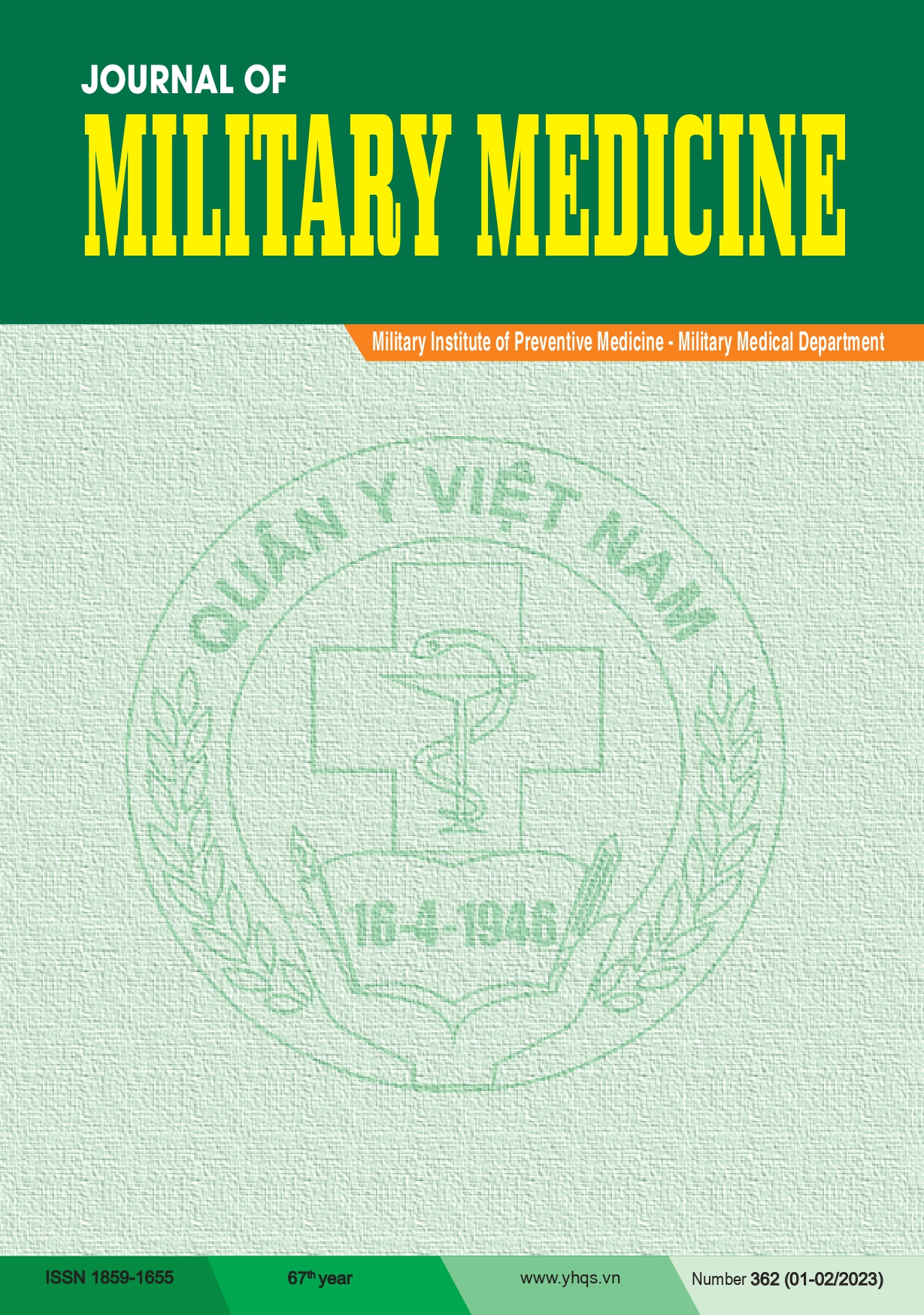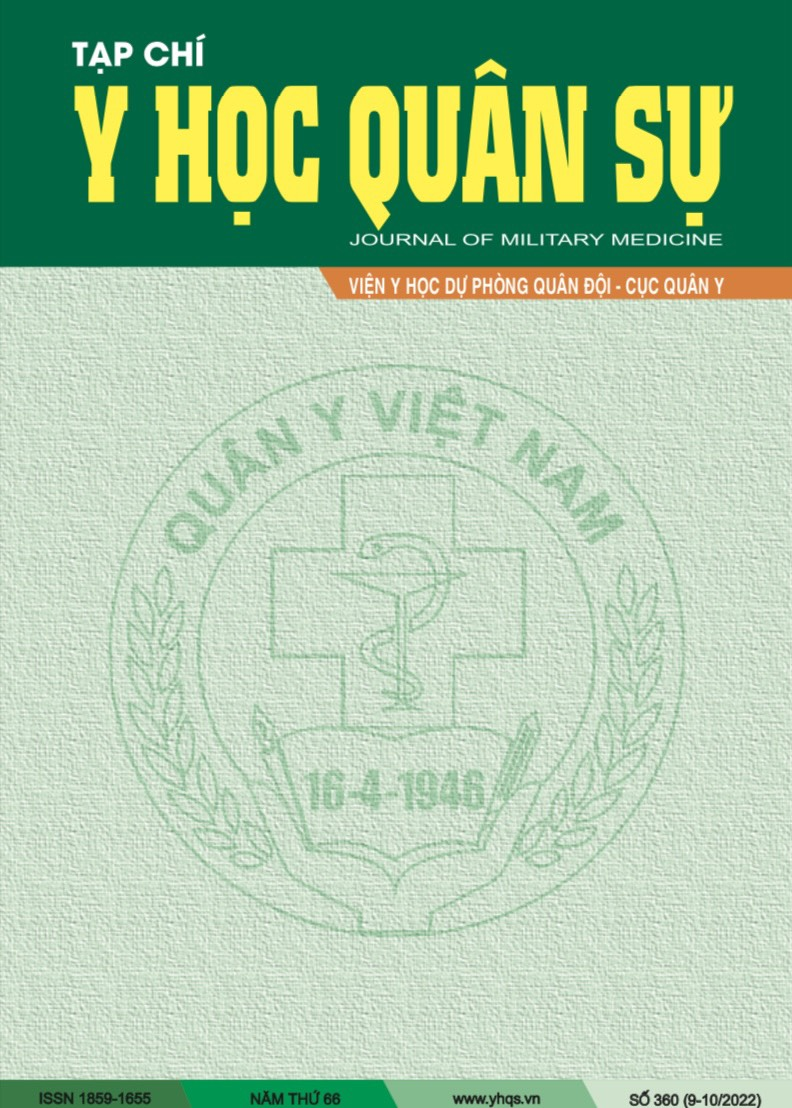STUDY ON THE ENERGY CONSUMPTION OF SOLDIERS BY EXPERIMENTAL FEEDING METHOD AT THE X. UNIT IN 2022
Từ khóa:
Energy consumption, experimental feeding, Keys methodTóm tắt
Purpose: We aimed to evaluate the energy consumption of the soldiers during labor, military training, and work.
Methods: Prospective study, case-by-case description.
Results: The calorific value of food provided through retrospective goods delivery note and goods received note of food and foodstuffs were 4,374 Kcal; actually was 4,074 Kcal. The ratio of thermogenic substances in the diet was not balanced. The average ingested energy of the study group was 3,458 Kcal/person/day. The average energy consumption of the research group was 3,600 Kcal/person/day. There 60.98% of soldiers had lost body weight (average weight loss of 300 g/person/15 days), 2.44% of soldiers kept body weight and 36.58% of soldiers gained body weight.
Tài liệu tham khảo
Le Thi Bach Mai, Le Thi Hop et al (2017), "Overweight and obesity in Vietnamese adults: Real situation and some risk factors", Vietnam Medical Journal, No. 440, p. 57- 63.
Department of Preventive Medicine- Ministry of Health (2015), National survey of risk factors for non-communicable diseases.
Sacks F.M, et al. (2009), “Comparison of weight-loss diets with different compositions of fat, protein, and carbohydrates”, N Engl J Med, 360 (9): p. 859-73.
Lehnert T, et al. (2013), “Economic costs of overweight and obesity”, Best Pract Res Clin Endocrinol Metab, 2013. 27 (2), p. 105-15.
Katsiki, N.D.P Mikhailidis, C Mantzoros (2016), “Non-alcoholic fatty liver disease and dyslipidemia: An update”, Metabolism, 65 (8), p. 1109-23.
Bjørn Mørkedal, Pa˚l R Romundstad, Lars J. Vatten (2011), “Informativeness of indices of blood pressure, obesity and serum lipids in relation to ischaemic heart disease mortality: the HUNT-II study”, European Journal of Epidemiology, 26, p 457-461.



